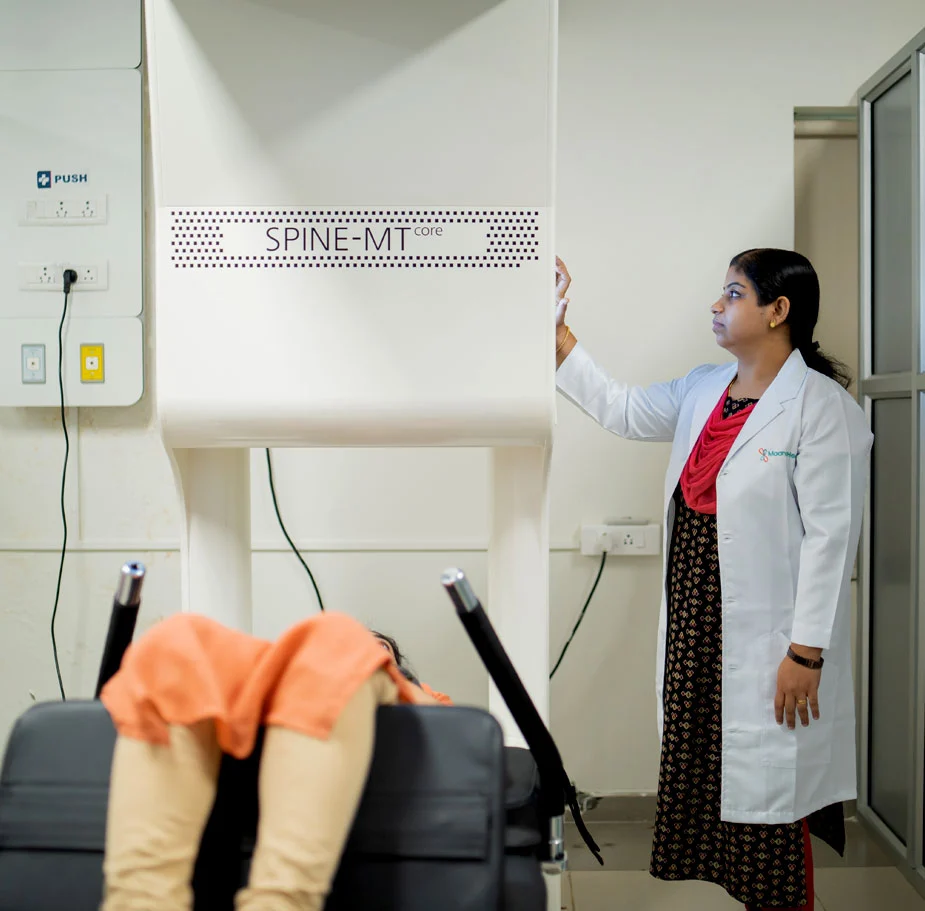Bulging Disk
Symptoms
Symptoms of one or more bulging discs may include:
Tingling or pain in the fingers, hands, arms, neck, or shoulders. This may indicate a bulging disc in the cervical area.
Pain in the thighs, lower spine, and buttocks. This is the most common symptom and indicates an issue in the lumbar region.
Difficulty while walking, lifting, or holding things.
Bladder incontinence can occur because of a bulge compressing the nerves that control the bladder.
Upper back pain radiating to the abdomen or chest may be a symptom of a mid-spine bulging disc.
Muscle spasms may also occur with bulging discs.
Causes
The causes of bulging disc may be:
Weakened back muscles can trigger the process and may lead to a sudden herniation of the weakened disc.
Sports activities.
Diagnosis
A thorough medical examination with X-ray and, in some cases, CT or MRI scans are necessary to rule out bulging disc conditions to the full extent accurately. These testing formats show changes in the shape and condition of the disc.
Treatments
Before herniation, many of the non-surgical treatments are successful in managing bulging discs. Pain management options depend on the severity of the condition. Once your pain improves, your doctor or a physical therapist can design a rehabilitation program to help you prevent further injuries. This includes exercises for postural correction, strengthen the muscles supporting your back and improve your flexibility.
Pain killers may relieve the pain temporarily, but it does not cure in all cases. Most of these problems may be managed without surgery with physical therapy. If it is an acute case (less than 6 months) icing is recommended to reduce the muscle ache. IFT, Ultrasound, and TENS are the electrotherapy modalities in physiotherapy management. Neural mobilization is very effective to relieve tingling and numbness to the limbs.
Our Spinal Wellness Program is a combination of manual and advanced therapeutic modalities, specific to individual patient conditions and diagnoses. Spinal decompression is an advanced version of traction which allows a negative pressure of -150 to -200 mm Hg to help the disc shrinks to its original shape. It applies computer-controlled pulling forces at precisely measured angles to gently distract specified spinal segments. This distraction in the joints relieves pressure within the disc and any pinched nerves which promotes the movement and absorption of fluids and nutrients in the disc space. These fluids and nutrients are adequate to maintain disc health. Progressively, these mechanisms can help to relieve pain.
Back ergonomic guidance and correction is critical for proper rehab and is extremely important for backache management as it helps in preventing recurrence. This consists of proper postural habits, a proper work environment, back exercises, and modifications in activities of daily living.

Elements of Spinal Wellness Program
Spinal Decompression Therapy
Pain Management
Exercises
Nutrition & Diet Management
Lifestyle Management
Ergonomics Guidance
Get a Quick Reply Here
Office
Monday to Saturday: 8:30am – 6pm
